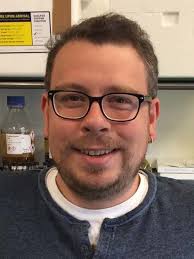
Thomas Geisberger
Technical University Munich (TUM), Germany
Title: Metabolomics of Metabolic Origins
Biography
Biography: Thomas Geisberger
Abstract
For the emergence of life, the origin of metabolism stands as a central problem. How did early biomolecules arise to form an intertwined network of self-controlling metabolic reactions? In scenarios for a potential chemoautotrophic origin of life, the relevant conditions could involve volcanic discharges and ashes or gradients in volcanic hydrothermal vents. These conditions can also be mimicked in laboratory settings. The analytical procedures necessary to evaluate these systems are closely related to metabolomics approaches qualified to analyze living organisms. In both cases, the main challenge is to analyze diverse mixtures of molecules in terms of quality, quantity and also isotope compositions (when working with labeled precursors). Thus, metabolomics could also provide a powerful tool to study the metabolism of “ancient” organisms for example to identify signatures of pathways which could go back to the origin of metabolism. In our work settings, methods originally developed for the analysis of bacterial pathogens [1] [2] are now transferred to organisms considered to be “ancient” or to reaction mixtures mimicking “primordial chemistry”. Analyzing extracts from these organisms or the cell-free reaction mixtures simulating origin-of-life scenarios provides a multitude of compounds. Even though many of them are still unknown, reaction mixtures mimicking conditions for the origin-of-life frequently show resemblances to extant metabolic pathways, like the formation of activated acetic acid [3], amino acids, α-hydroxacids [4], and fatty acids [5]. In turn, analysis of the “ancient” organisms is the basis for the quantitative description of hitherto unknown metabolic pathways and enzyme functions, like the dicarboxylate/4-hydroxybutyrate autotrophic carbon assimilation cycle [6] or a reverse citrate cycle involving the reverse reaction of citrate synthase [7]. In the workshop, we will present advances and examples of how methods of metabolomics have benefitted recent studies of metabolic origins.

